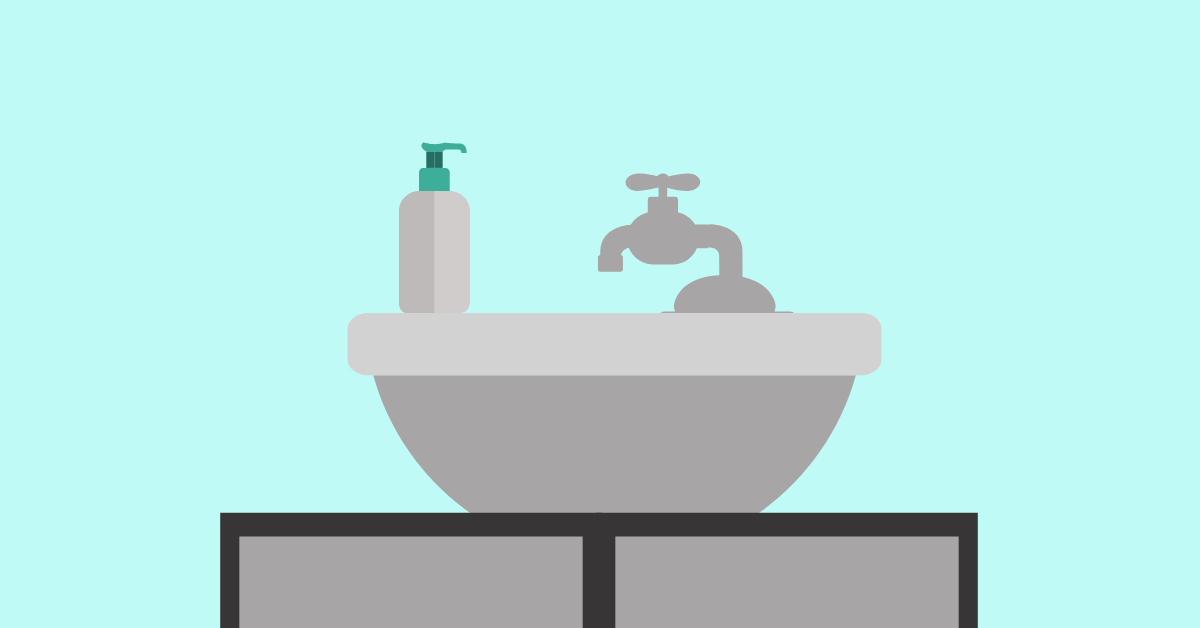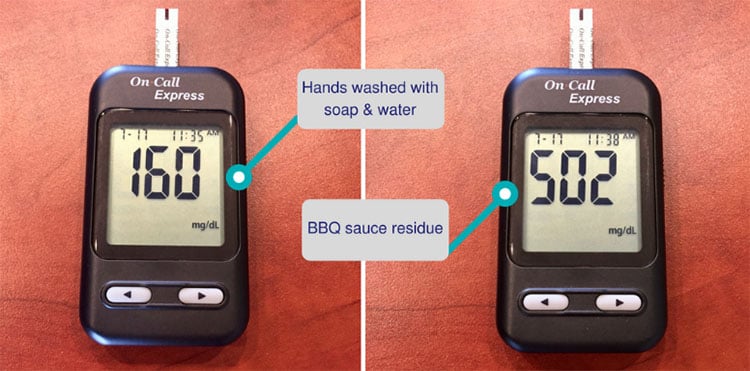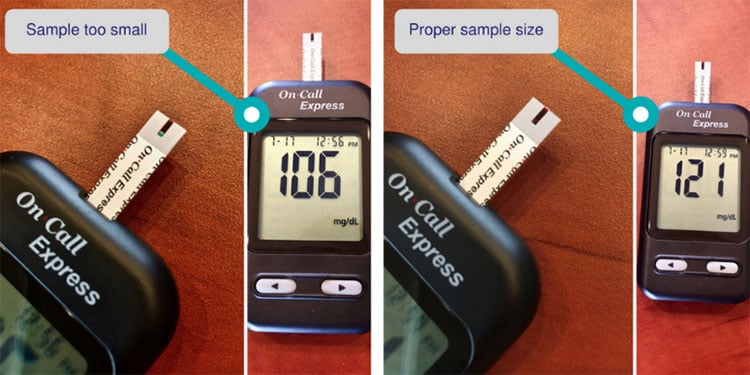
Have you ever checked your blood sugar and been suspicious of the result? Having lived with diabetes for over 25 years I know the discomfort of both high and low blood sugar. It is unmistakably evident to me when I am far out of my target range. Sometimes, when I am certain that I am in range, the number on my meter tries to tell me a very different story. But I have come to realize that the error may be mine.
Here are three tips for getting more accurate blood sugar readings.
If you have something on your hands when you lance your finger for blood there is a good chance it will inflate the number. For example, let's say you just ate some barbecue ribs, but you forgot to check your blood sugar before you started. You wipe off your fingers, pull out your meter, and check. Can you trust the reading you see? To demonstrate this I ran a test.
After washing my hands with soap and warm water I checked my blood sugar. The number I saw was 160 mg/dL, which I checked against the number on my continuous glucose monitor (CGM) to confirm accuracy. I dabbed my fingers into some barbecue sauce, rubbed the sauce around a bit (I know, gross!), and wiped it off with a paper towel. Next, I loaded a new test strip, a fresh lancet, and checked again - 502 mg/dL! The sauce on my fingers contaminated the blood I had drawn. Keep in mind that barbecue sauce is just an example. Any contaminant on your fingers could potentially affect the accuracy of your blood drop.

Did you know that rubbing alcohol can affect accuracy? While I'd heard about the possibility in the past, I had never tested to be sure. So, I decided to give it a try. After my barbecue sauce test I opened an alcohol prep pad (70%v/v Isopropyl Alcohol) and wiped my fingers off well. I loaded a new test strip, a fresh lancet, and checked again. 120 mg/dL, which was about 40 points lower than my actual blood sugar at the time. While alcohol swabs are important for prepping an injection site to avoid infection, they are not ideal for prepping a finger stick for a blood sugar check.

When you apply blood, capillary action inside the test strip pulls the blood in and connects it with an enzyme electrode that reacts to the blood. But if you don't apply enough blood to fill the strip, it may result in an inaccurate reading. An hour after my previous experiments, I decided to try this out.
After checking my CGM for a control number (122 mg/dL) I applied a drop of blood to the test strip in my meter. I didn't draw a full drop, only filling the test strip ¾. The result on my meter was 106 mg/dL. Next, I loaded a new test strip and filled it again, being sure to completely fill the test strip. The result on my meter was 121 mg/dL. Using the right amount of blood will improve the accuracy of your readings.

The examples presented here are my experience, and yours may vary. Have you discovered something that causes your numbers to be inaccurate?
Did you know that test strips can become less accurate as they age? The enzymes in test strips can be damaged by age or from temperature changes during shipping or lose effectiveness when the strips exceed expiration dates. Make sure your test strips are not expired. You can order new test strips right here in the Diathrive Health app.